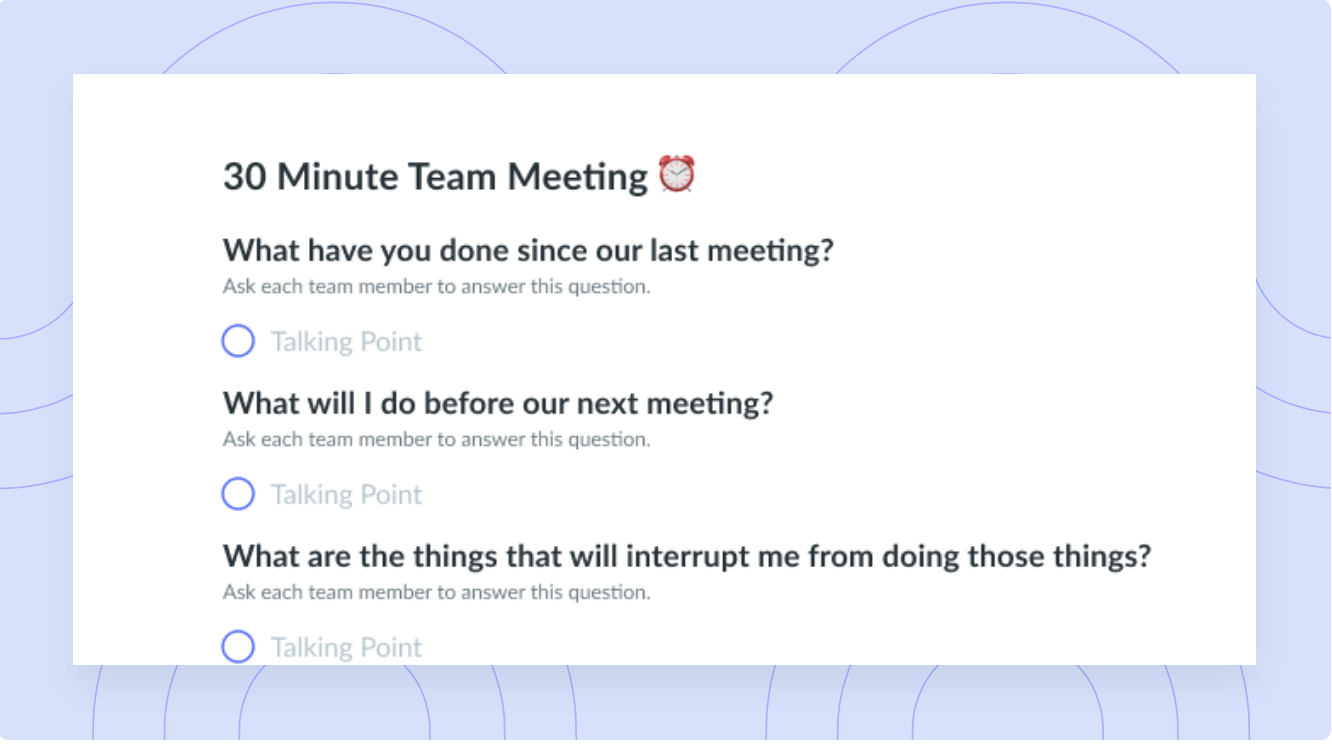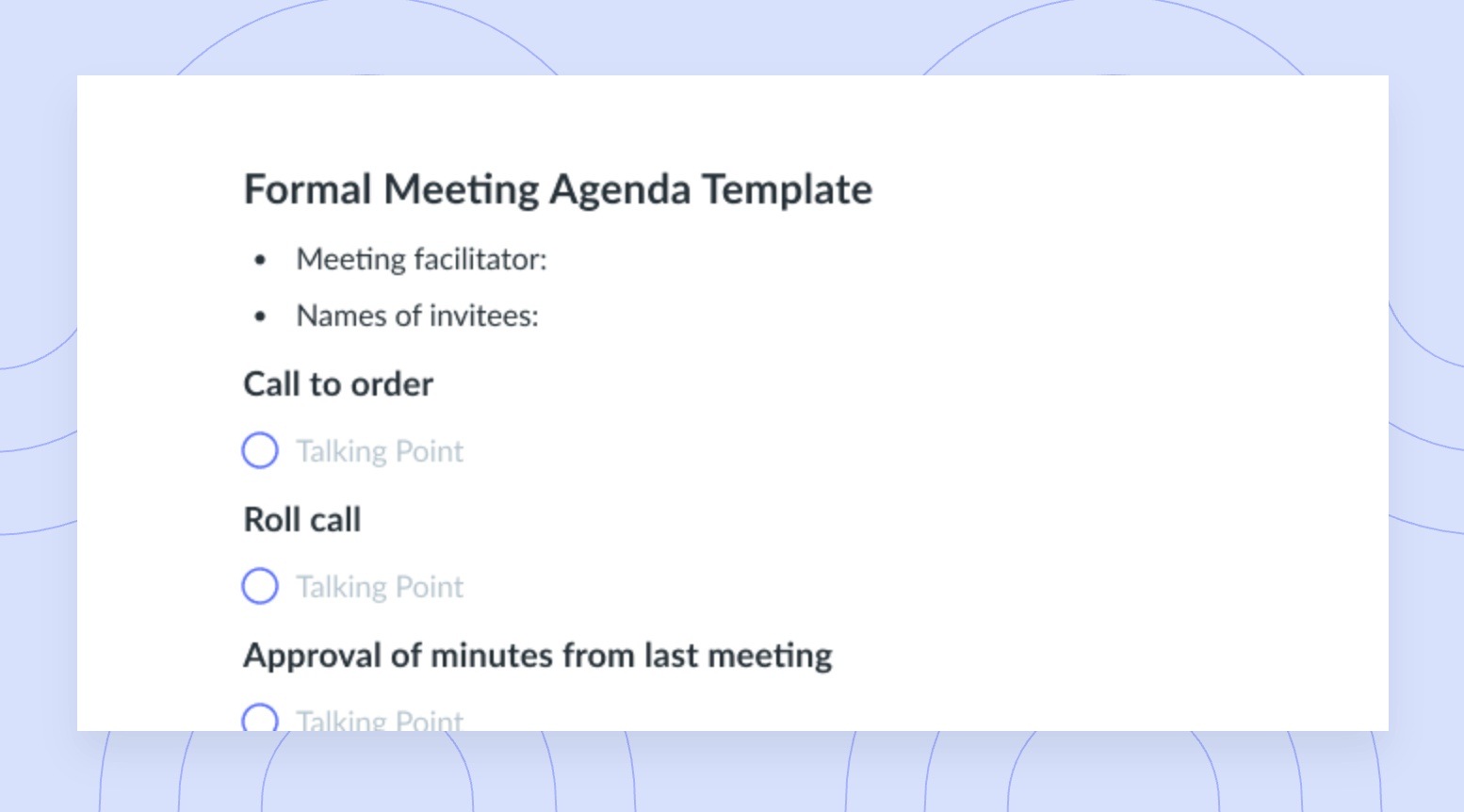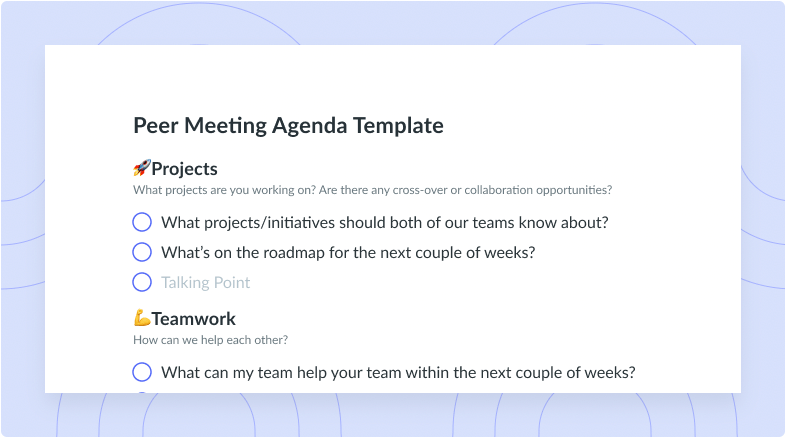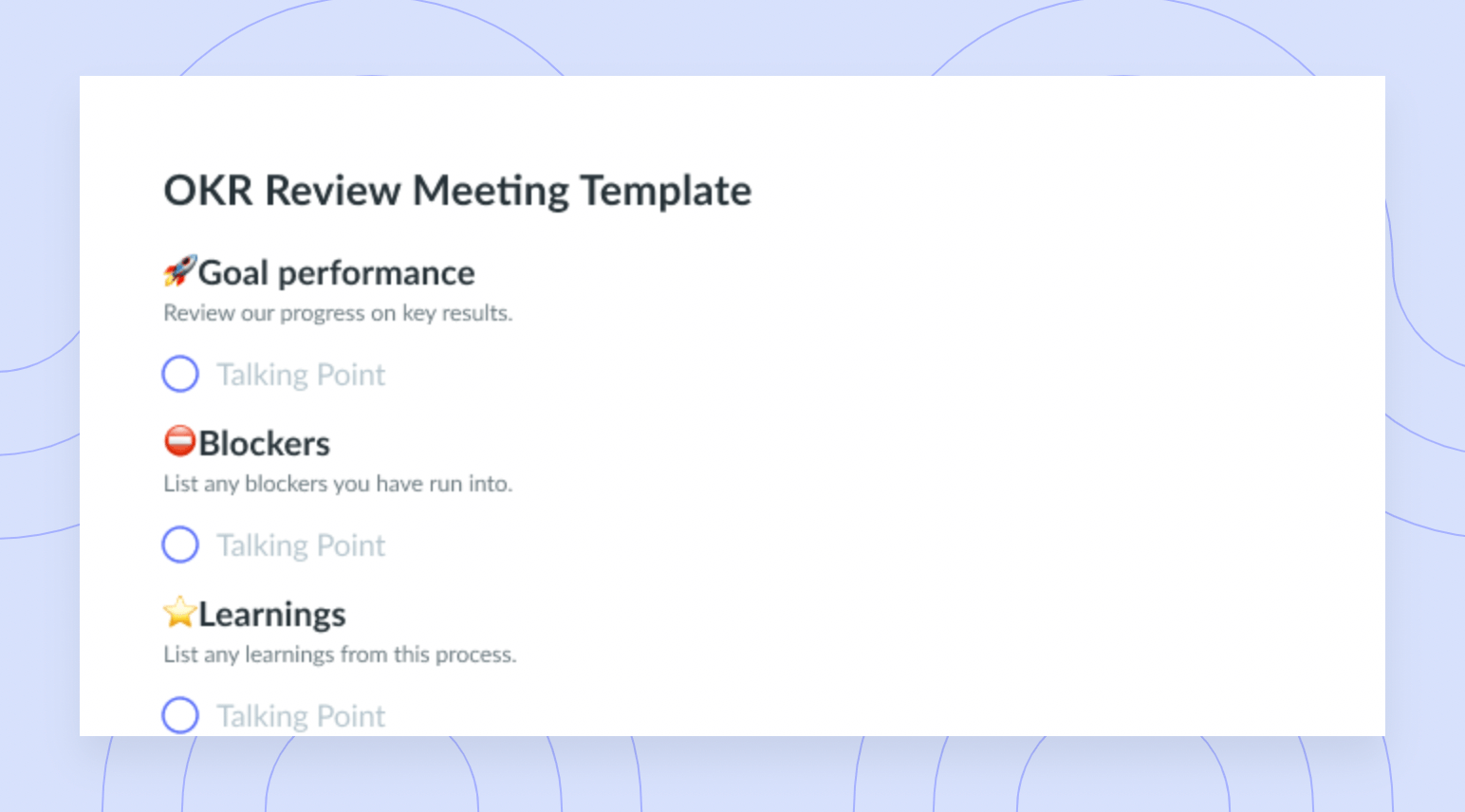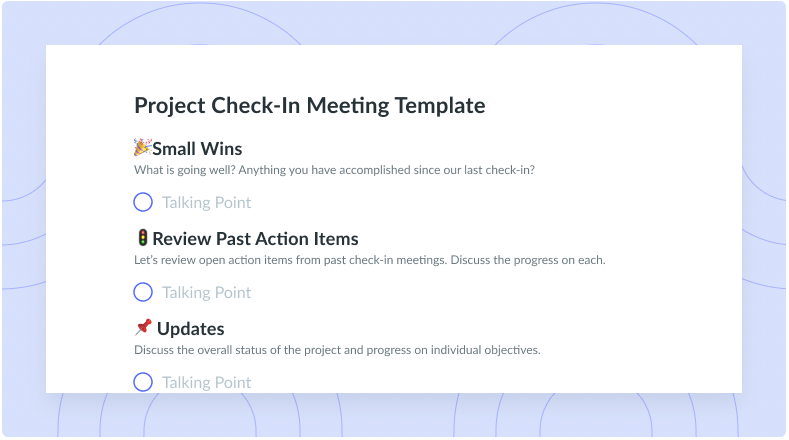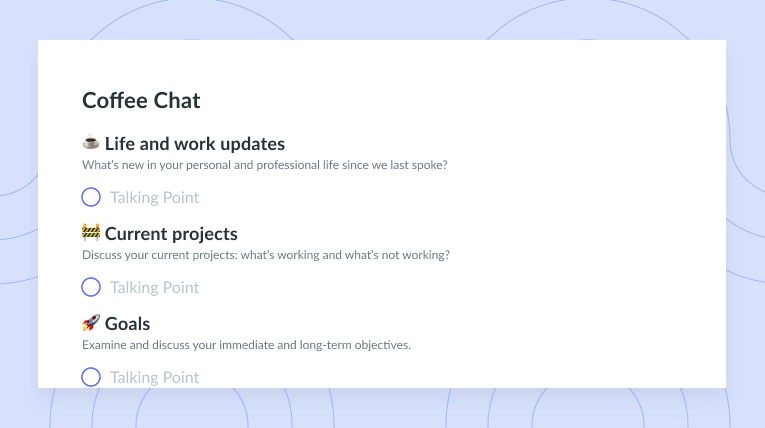In-Person Meetings: When (and Why) They Make Sense
Meetings are essential – they’re how you get everyone up to speed on big changes and new projects. Read on to find out when you should meet face-to-face.
As remote work has become more commonplace, so too have virtual meetings. But the thing is, online meetings aren’t the perfect option for every occasion. An in-person meeting will prove more effective in certain situations. The hardest part is often knowing when a face-to-face gathering is better than going virtual, but you don’t have to make the choice unprepared. Below are several tried-and-true tips for determining whether an in-person meeting is superior – and advice on how to run it.
- 5 cases where an in-person meeting makes more sense
- Benefits of in-person meetings
- Where should you host in-person meetings?
- How to host an in-person meeting
5 cases where an in-person meeting makes more sense
Generally, you’ll gather your team to discuss certain meeting objectives, and these are what determine whether you should stay virtual or meet in person. Below are a few examples of meeting objectives and situations to help you understand the situations that typically call for a face-to-face gathering.
- If the meeting is for team-building
- If the objectives are complex
- If greater focus is required
- If building trust and business relationships
- If better participation is needed
1 If the meeting is for team-building
Human beings are social creatures. That’s true in more than the sense of being extroverted. It also encompasses the fact that body language and facial expressions are a huge part of everyday communication. You can’t always make sense of these important signals as easily via video conferencing. That’s why building meaningful and productive relationships between team members is often more effective face-to-face. In other words, meetings that include team-building games fare better in person.
Even if you’re not playing team-building games, your meetings can help forge bonds among your team members. After all, in a truly productive meeting, no one is afraid to speak their minds. That sort of open dialogue can really help your team members get to know (and trust!) one another. Making a safe space for your team to share their opinions is typically easier in person for all the reasons above.

Encourage collaboration
Have space for everyone to contribute to the meeting agenda to encourage team-building and collaboration. Use a tool like Fellow!

2 If the objectives are complex
While online meeting rooms are convenient spaces for team members to gather with minimal interruption to their work, there can still be hurdles. For example, some virtual conference programs offer minimal support for in-depth topics.
That means meetings where you share lots of info can hit a dent when technical issues arise. Imagine having to explain something complex or lengthy over a poor internet connection with constant interruptions? You can entirely avoid that problem by hosting an in person meeting.
3 If greater focus is required
In-person meetings and office work have one distinct advantage over remote positions: fewer distractions. The typical in-person work environment encourages professionalism and hard work while your team is on the clock. That atmosphere is harder to achieve when your team members are working from home, surrounded by their favorite distractions. For meetings that require intense focus – say, an in-depth project management meeting – those distractions could prove problematic. You can eliminate them in person.
4 If building trust and business relationships
Given the nature of body language, tone of voice, and all kinds of nuances, virtual meetings are typically better for casual, lower-stakes affairs. Big things such as building trust and making new business connections are typically easier in person.
The size of virtual meeting spaces also favors in-person meetings for trust and relationship building. Where virtual meetings can have literally thousands of attendees, most conference rooms fit at most a couple dozen. With fewer people present, everyone in the room can more easily speak with each other and build the trust and relationships you’re seeking.
5 If better participation is needed
Picture this: You’re attending a five-person meeting and only two people show up on time. What do you do while you’re waiting for everyone else to show up? You’ll probably pivot to small talk and deviate from the agenda you took care to develop. That’s generally much less comfortable over video conference. That sort of initial discomfort can dissuade participation when the group shows up.
More importantly, in large virtual meetings, team members who don’t feel comfortable sharing their opinions could basically fade into the background. That anonymity doesn’t exist during face-to-face meetings. With fewer participants all in person, it’s hard for someone to get lost in the crowd. In-person non-participation often sticks out like a sore thumb.
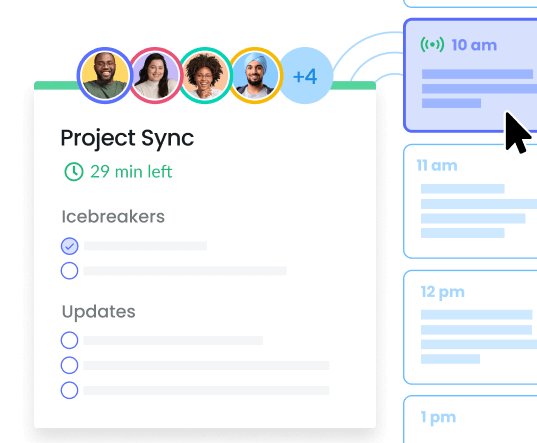
Benefits of in-person meetings
In-person meetings can be better than virtual meetings even in cases that aren’t inherently better-suited to face-to-face conversations. That’s because in-person meetings offer the following advantages over virtual meetings:
- Better communication. Yes, saying this again is basically being a broken record, but it’s super important. So here we go: Tone, facial expressions, and body language are vital parts of speech that get lost over virtual channels. And even if you do figure out how to read between the lines on video chat, technical difficulties could lead you to miss vital information. That’s virtually impossible in person if you’re paying attention.
- Better relationship-building. Any meeting will take time away from your overall task list. Admittedly, face-to-face meetings eat away at more of your workday, but there’s a big silver lining to that. When you’re that busy, making space in your schedule to meet people in person is a big sign of respect. That respect can be the foundation of a long-lasting work relationship.
- Greater trust. Nonvisual social cues like tone of voice makes building trust easier in person. Interacting through video or email can remove the human element that often shows the true meaning behind someone’s words. These electronic mediums can make a colleague’s words seem unfriendly even if delivered with good intent. These sorts of needless but inevitable misunderstandings are less likely in person.
- Fewer interruptions. No matter how much your team relies on technology, it’s not perfect. Technical issues are kind of inevitable, and you can never be sure quite how things will go when you log on. For example, a laggy connection could lead to team members speaking over each other. Lag doesn’t exist in in-person meetings, where there aren’t typically obstructions to hearing well.
- Better focus and participation. In a productive meeting, everyone’s ideas receive the same amount of attention and merit. However, not everyone on your team will be a social butterfly who loves to put their thoughts on the table. These team members can be tough to guide into participation amid technical difficulties and a larger audience. You can more easily guide the conversation during in-person meetings and give everyone a chance to speak.
Where should you host in-person meetings?
You can go to places well beyond your office to host in-person meetings – well, sometimes. In some cases, your quiet, private conference room will still be the best bet. Below is a list of locations where you can host in-person meetings and when each location might be best.
- Restaurants. Holding a lunch meeting can be more convenient because it’s not taking time away from anyone’s actual work hours. And for lunch meetings, restaurants are an obvious choice of location. They’re especially well suited for less formal meetings and team-building events. While you could theoretically try out formal meetings in certain restaurants, there’s often too much noise to make the environment feel anything but informal.
- Coffee shops. When you need to step out of the office for a change in scenery and some light refreshments, try coffee shop meetings. They make a great backdrop for one-on-one meetings since their more easygoing environment can encourage both people to share more. But since coffee shops are usually on the smaller side, don’t host team meetings there. That’ll likely end up feeling claustrophobic.
- Conference room. While restaurants and coffee shops are great for informal gatherings, formal meetings require a more controlled environment. Conference rooms are designed to appear professional and give you plenty of privacy. If you don’t have a conference room right in your office, you can rent one from a coworking space, hotel, or another business.
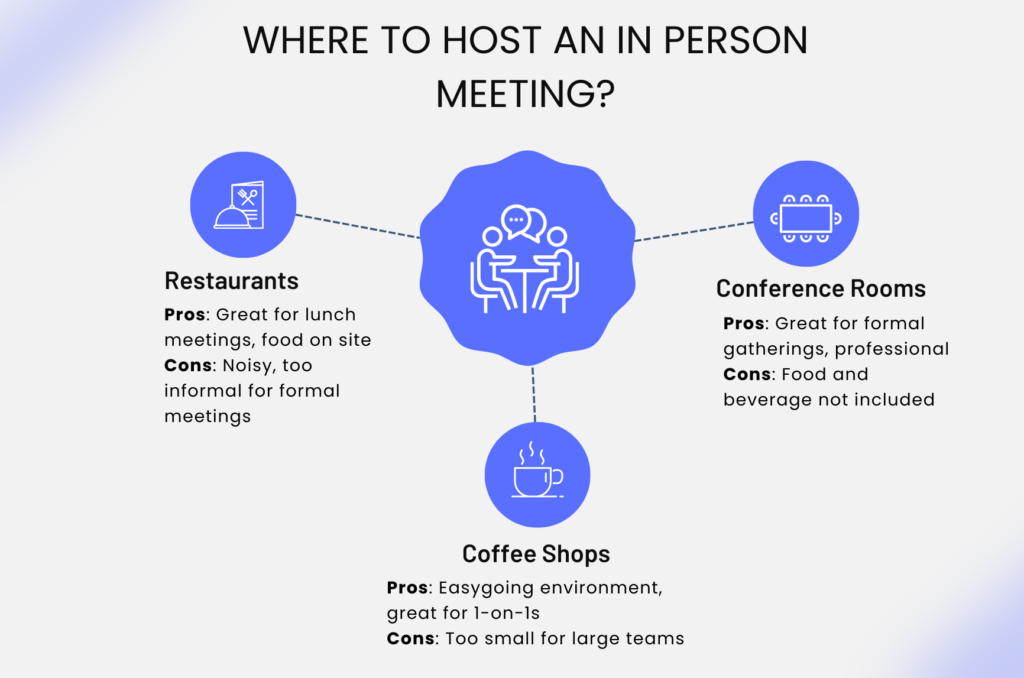
How to host an in-person meeting while keeping everyone healthy
In-person meetings have their advantages, but one major disadvantage has only appeared relatively recently: the COVID-19 pandemic. The coronavirus has, to put it lightly, made meeting coworkers face-to-face a little more complicated than normal. That’s why you’ve been to so many remote meetings lately in the first place.
Of course, COVID-19 vaccines have led to some employers bringing employees back to the workplace [1]. At the same time, though, some folks may want to proceed with caution. You’re probably best off taking some precautions when planning an in-person team meeting to help keep everyone healthy. Below are a few simple tips you and your employees can take to stay healthy during in-person meetings.
- Schedule around less busy times
- Give everyone masks
- Space out seating
- Open your windows
- Avoid food and drinks
- Keep it short
1 Schedule around less busy times
The more people in your vicinity, the higher your team’s chance of getting sick. Think about it: Just one person unknowingly showing up with COVID-19 can get everyone sick [2]. (Remember: Not everyone carrying COVID-19 knows they have it!) [3]
If you and your team plan on meeting in a public place, try to avoid scheduling things near peak hours. The same goes for if you’re planning a lunch meeting at a restaurant: Stay away from the usual lunch rush to avoid illness. Call it a “late lunch meeting” to get the point across.
2 Give everyone masks
Masks have proven to be effective against stopping (or at least slowing) the spread of the virus [4]. Providing basic sanitation supplies like masks and hand sanitizer to participants before the meeting starts can curb asymptomatic transmission [5]. Note that some masks are more effective than others [6], so using them in combination with other safety measures has the best chance of keeping your employees healthy.
3 Space out seating
Social distancing has long been touted as a preventative measure against COVID-19. You might see it happening a bit less these days, but it’s still effective for in-person meetings. Keeping a bit of distance between team members during a meeting can sometimes minimize the chances of unexpected spread [5]. Leaving an empty chair between each participant should work if you’re in a conference room.
4 Open your windows
COVID-19 spreads by attaching to microscopic water droplets in a person’s breath [7]. These droplets hang in the air until someone else breathes them in and contracts the disease. Increased ventilation can help draw this COVID-infected vapor away from your team members and keep them from getting sick [8].
5 Avoid food and drinks
It’s not uncommon to put out a bite and a sip during a face-to-face meeting. There’s just one problem with that: With COVID-19 here to stay, food and drinks can lead to unhealthy meetings. Whenever someone is eating or drinking, their mask comes down momentarily, giving more opportunities for potential viral spread. When your entire team is eating nearby or in an enclosed space, the risk of spreading the virus increases even further.
6 Keep it short
If you’re meeting in person, keeping things short limits your potential exposure to COVID-19 [9]. Narrow your meeting down to only the most important points, start and end on time or earlier, and send any extra details through email. This shift might feel a bit unnatural, but it’s worth it to keep everyone healthy and happy.
A time and a place for face-to-face
Virtual and in-person meetings are better suited for different situations. Going remote is generally better for more casual gatherings, while face-to-face meetings better suit formal occasions. Recognizing when one is more beneficial than the other can help you have more productive meetings.
While these two types of meetings may be different, Fellow helps you run both effectively. With Fellow’s meeting templates, shareable online notes, and collaborative agenda features, keeping your team on the same page, in-person or online, has never been easier.
Sources:
1. CNBC. “Employees could be heading back to the office sooner than they think.” cnbc.com; accessed February 2021
2. NPR. “What We Know About The Silent Spreaders Of COVID-19.” npr.org; accessed February 2021
3. Healthline. “As Many as 80 Percent of People with COVID-19 Aren’t Aware They Have the Virus.” healthline.com; accessed February 2021
4. Centers for Disease Control and Prevention. “Effectiveness of Face Mask or Respirator Use in Indoor Public Settings for Prevention of SARS-CoV-2 Infection — California, February–December 2021.” cdc.gov; accessed February 2021
5. Centers for Disease Control and Prevention. “How to Protect Yourself & Others.” cdc.gov; accessed February 2021
6. Food and Drug Administration. “N95 Respirators, Surgical Masks, Face Masks, and Barrier Face Coverings.” fda.gov; accessed February 2021
7. The Conversation. “Coronavirus drifts through the air in microscopic droplets – here’s the science of infectious aerosols.” theconversation.com; accessed February 2021
8. Environmental Protection Agency. “Ventilation and Coronavirus (COVID-19). Epa.gov; accessed February 2021
9. CDC. “How To Talk To Your Close Contacts.” cdc.gov; accessed February 2021









